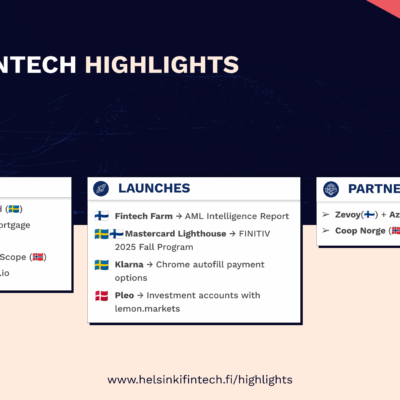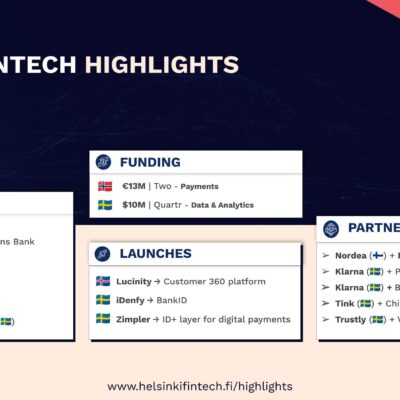At this year’s Nordic Fintech Summit edition, Alan Goodrich, Regional Sales Manager at ERI, participated in a “Strategy Talk” session, to examine the impact of the EU Competitiveness and simplification initiatives on FiDA under the banner of “Open Banking: New Opportunities for Unlocking the World of Finance”.

- Simplification of the scope of FiDA, i.e. limit the number of data categories
One of the major complaints, articulated by the various industry associations that signed-up to the 20th March letter, is that the proposed FiDA regulation “imposes disproportionate costs and weaken competitiveness”. However, if the scope is limited, this will also have a limiting effect on the potential ability and opportunities to enhance revenue generation through innovations, like premium APIs and hyper-personalisation of products and services. The conclusion: Limiting the data categories would probably be counter productive.
- Historical Data, i.e. reduce the maximum period from 10 years to 5 years (or less for some data types)
Here, again, cost (in this case; data storage and digitisation of non-digital content) has been cited as a primary reason for reducing the maximum period. For many data types, the importance of having 10 years’ historical data available in digital format is questionable. Therefore, perhaps this a point that the EU should maybe concede.
- Financial Data Sharing Schemes, i.e. a revision of the Gradual Approach
The main argument for a revision of the Gradual Approach is that it may not reflect “market/customer demand”. The EBF is looking at proposing 3 levels of Gradual Approach that, ironically, do not seem to be based on any market/customer demand research. But, rather, driven by a desire to push the more complex instruments to the back of the queue. Is a gradual approach the best route and, if so, should it be based on instrument types, or depth of data covered by the schemes, i.e. adopt a phased approach to the schemes, rather than data category? Based on the PSD2/Open Banking experience, a gradual approach to the scope of data per instrument could be a valid option and allow the introduction of instrument types to be achieved incrementally faster. Based on the views of the previous speakers and panellists at the conference, the assertion that there is a lack of demand seems flawed.
- Customer data sharing confirmation mechanism, i.e. qualify “real-time” and delete “continuously”
To consumers of financial services and regular users of e-commerce platforms, this request also seems somehow to lack merit. Consumers (individual or institutional) expect financial services providers to offer digital access to their own data, encompassing all financial instruments, “continuously and in real time”, mirroring the seamless experience delivered by leading e-commerce platforms. For years, even decades, it seems as though incumbent financial services providers (especially the large ones) have either under-invested, or misdirected investment, in technology, compared to other industries. The EBF document currently being drafted, proposes to qualify “real-time” and delete “continuously” because “internal processing of customer data by financial institutions does not always take place in real time, but to a significant extent in batch processing”. In other words, the suggestion is that FiDA should be diluted down to the lowest common denominator of digital service provided by these big institutions with legacy systems. The feeling is that the EU should hold firm, as far as possible, with its position and promote, as the title of the session alluded to, “new opportunities for unlocking the world of finance for the next generation (of both customers and financial services providers).
- Permission Dashboards, strengthening of the permission process
In this case, the EBF proposal being drafted seems quite paradoxical. Rather than advocating for “simplification”, the suggestion is that the “dashboard” becomes nothing more than a monitoring tool for the customer and that a quite complex 5-step process be adopted (outside of the tool) to strengthen the permission process. These days, consumers are used to having permission dashboards in the tools they use, e.g. social media platforms, that give them the power to control the use of their data. It is not clear why financial services providers would want to retain costly, complex processes, instead of empowering customers through a secure dashboard, unless they want to charge for the service.
FiDA – Survival of the Fittest
It seems as though those with the loudest voices in the industry are also the ones with the biggest legacy system challenges and therefore at greatest risk of being unable to remain relevant in a world of open finance adapted to the needs of the next generation of customers (personal consumers and business leaders).
It is likely that the EU will need to dilute FiDA to an extent, and introduce some form of Gradual Approach, in order to accommodate the laggards. However, the market is likely to leave behind those that cannot adapt fast enough and operate profitably in a FiDA-enabled open financial services world. If the EU holds firm, insofar as possible, then the outcome will be that natural selection runs its course and only the fittest will survive.
Author
Alan Goodrich, Regional Sales Manager at ERI
Alan has 35+ years of experience in finance and technology, with expertise as a Fellow of the Institution of Analysts and Programmers and a General Registered Representative of The Securities Association. He’s held senior roles at leading financial firms and technology suppliers. Currently, he serves as Regional Sales Manager at ERI, overseeing Benelux, Nordic, Baltic, and SEE territories.
ERI
ERI is the supplier of the OLYMPIC Banking System, offering award-winning levels of innovation, real-time process automation and compliance, with low-risk implementation at a very competitive TCO.
Website | LinkedIn
Want to hear more? Access tons of free and paid courses exploring the next chapter in banking, insurance and finance at the Digital Banking Academy!




